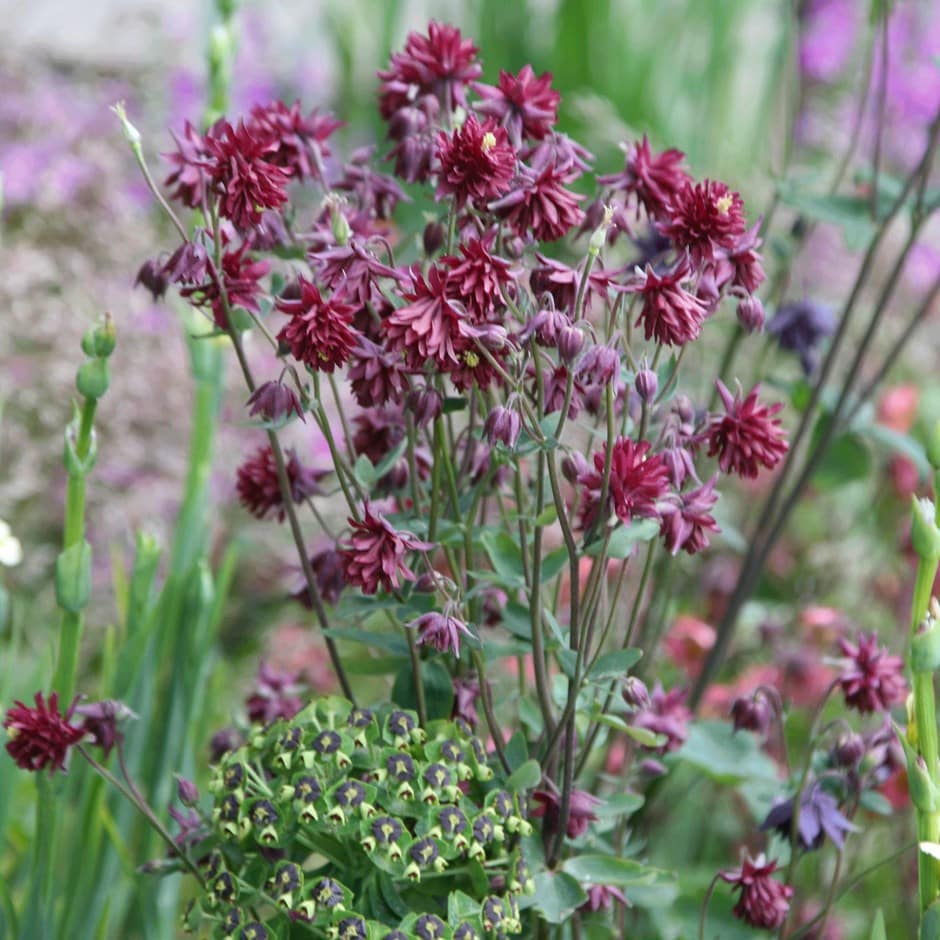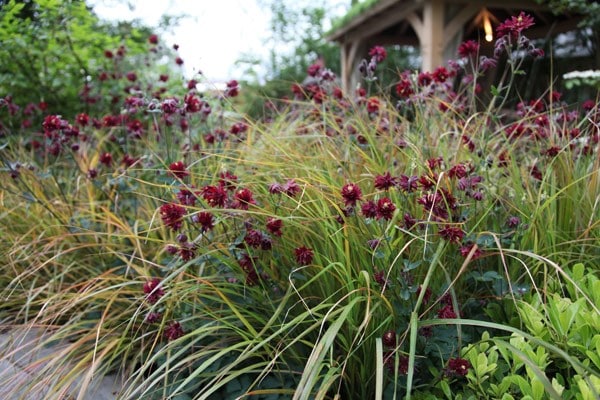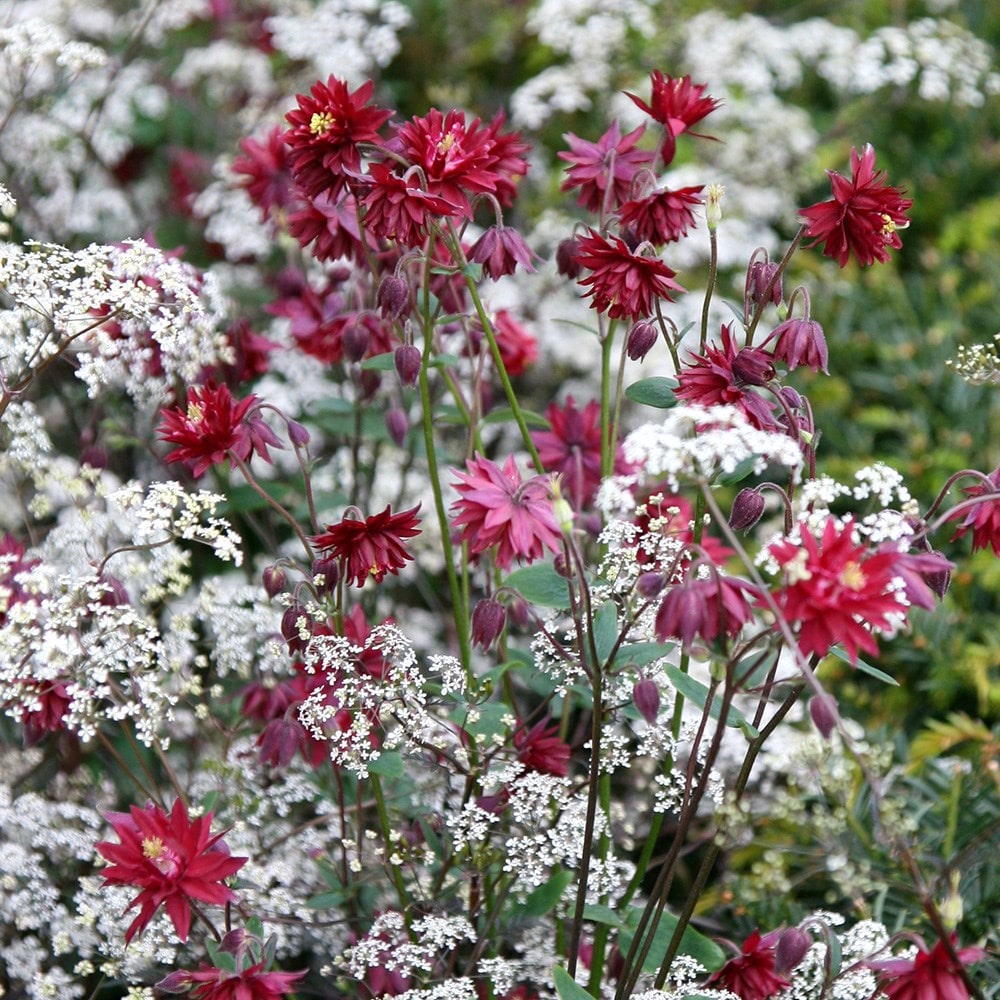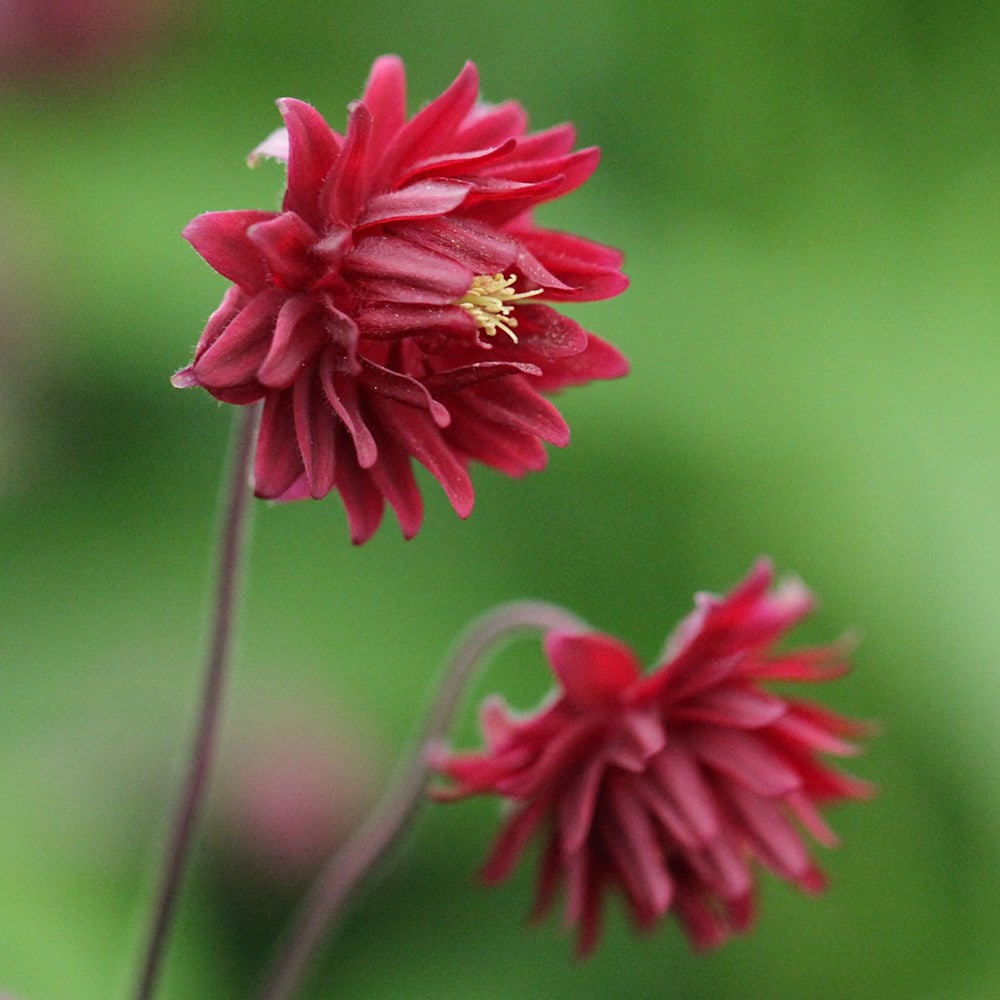Aquilegia vulgaris var. stellata 'Ruby Port'
granny's bonnet
- 9cm pot
- £9.99
- In stock (shipped within 2-3 working days)
- 3 × 9cm pots
- £22.99 £7.66 each
- In stock (shipped within 2-3 working days)
Delivery options
- Standard £5.99
- Position: full sun or partial shade
- Soil: mderately fertile, moist but well-drained soil
- Rate of growth: average to fast
- Flowering period: May to June
- Hardiness: fully hardy
Compact and upright in habit, this ornamental perennial produces fully double, deep ruby-red blooms in late spring and early summer. The nodding flowers appear on tall, branching stems above a clump of finely divided, mid-green foliage.
Aquilegia vulgaris var. stellata 'Ruby Port' brings strong visual impact to mixed borders, particularly when paired with contrasting shades like lime green or pale yellow. This cultivar lacks the long spurs found on traditional columbines, giving it a more pompom-like appearance.
Ideal for cottage-style planting, naturalistic schemes or as a cut flower. Deadhead faded flowers to encourage additional blooms or allow them to set seed to establish naturalised drifts. Best refreshed every few years to maintain vigour. A good performer in UK gardens and attractive to pollinators.
Aquilegia vulgaris var. stellata 'Ruby Port' brings strong visual impact to mixed borders, particularly when paired with contrasting shades like lime green or pale yellow. This cultivar lacks the long spurs found on traditional columbines, giving it a more pompom-like appearance.
Ideal for cottage-style planting, naturalistic schemes or as a cut flower. Deadhead faded flowers to encourage additional blooms or allow them to set seed to establish naturalised drifts. Best refreshed every few years to maintain vigour. A good performer in UK gardens and attractive to pollinators.
Plant Aquilegia in sun or partial shade in moist but well-drained soil. It's tolerant of a range of soil types and will often self-seed if happy, creating natural-looking drifts.
Remove faded flower stems to tidy the plant or leave them to self-seed.
Lift and divide large clumps in early spring and apply a generous 5–7cm (2–3in) mulch of well-rotted manure or garden compost around the plant. Divided specimens may take some time to establish since they don't like having their roots disturbed.
Remove faded flower stems to tidy the plant or leave them to self-seed.
Lift and divide large clumps in early spring and apply a generous 5–7cm (2–3in) mulch of well-rotted manure or garden compost around the plant. Divided specimens may take some time to establish since they don't like having their roots disturbed.




